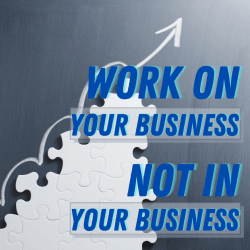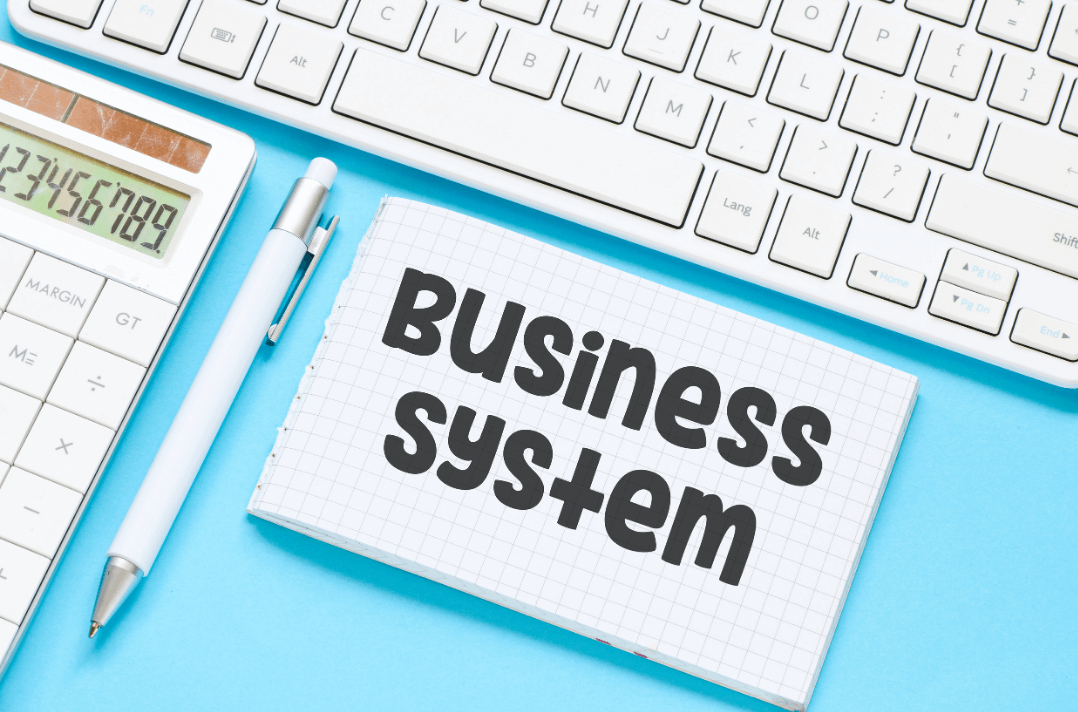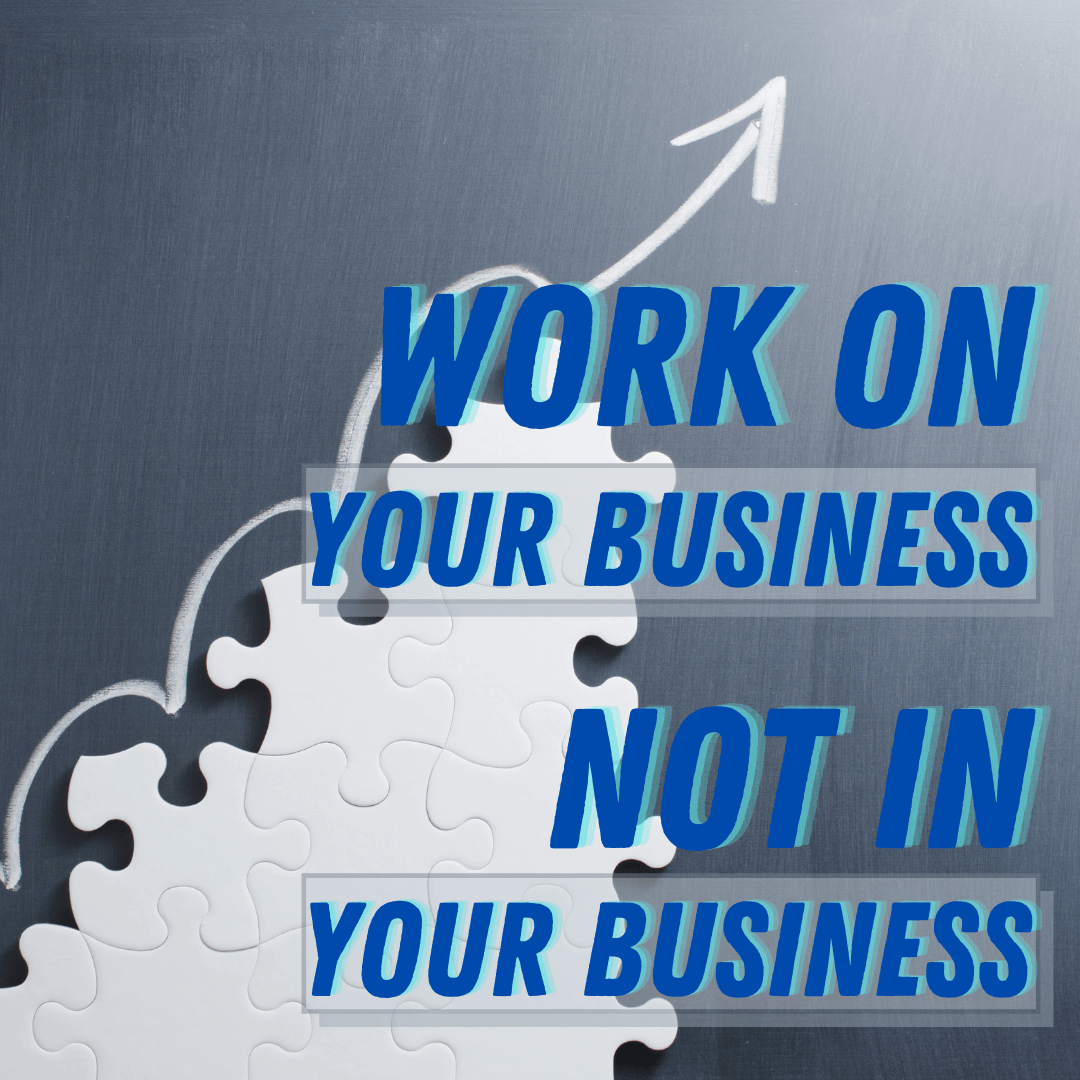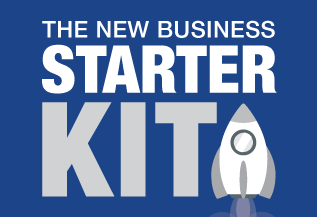 It’s
Time to Work ON the Business, not just IN the Business
It’s
Time to Work ON the Business, not just IN the Business
Most business owners are familiar with Michael Gerber’s 1986 book, The E-Myth (Entrepreneurial Myth) Revisited. Gerber suggests that people think businesses are started by real entrepreneurs, however, in reality, the majority of businesses are started by ‘technicians’.
A tradesman might be skilled at building or re-wiring a house, however, they might lack the essential marketing, bookkeeping or financial management skills to grow a successful business. An exceptionally talented motor mechanic might know very little about people management, social media, lead generation or how to convert those leads into customers. One of the key messages for entrepreneurs in the book is, business owners need to work ON their business, not just IN the business.
 The challenge for every business owner is to create a business that works independently of them. In other words, a business that doesn’t
rely on their technical skills to produce the necessary outcomes and financial results. A lot of small business owners genuinely believe
that nobody else can perform certain technical tasks better than they can and while there may be an element of truth in that belief, there
are lots of skilled technicians in the marketplace. Of course, the vast majority of these technicians are not suited to running their own
business because they lack the necessary marketing, sales, HR, social media or bookkeeping skills.
The challenge for every business owner is to create a business that works independently of them. In other words, a business that doesn’t
rely on their technical skills to produce the necessary outcomes and financial results. A lot of small business owners genuinely believe
that nobody else can perform certain technical tasks better than they can and while there may be an element of truth in that belief, there
are lots of skilled technicians in the marketplace. Of course, the vast majority of these technicians are not suited to running their own
business because they lack the necessary marketing, sales, HR, social media or bookkeeping skills.
As an entrepreneur you need to be flexible and multi-task which means you may have to fill the roles of receptionist, recruiter, cleaner and bookkeeper. The workload can be overwhelming but working longer hours is generally not productive, sustainable or healthy. Working smarter not harder is the answer and that includes not wasting time on low level tasks that could be delegated to team members or outsourced.
 The fact is, most businesses stay small for a reason but working ON the business can have a profound impact on your growth
and profitability. The franchise model is a great example because you can open 10 branches of your business when you obviously can’t
be in 10 places at once. By systemising all the operating procedures and documenting them for others to follow, you can create a business
model that works without your technical input. Trained staff provide leverage to help grow the business, the profits and the business
value.
The fact is, most businesses stay small for a reason but working ON the business can have a profound impact on your growth
and profitability. The franchise model is a great example because you can open 10 branches of your business when you obviously can’t
be in 10 places at once. By systemising all the operating procedures and documenting them for others to follow, you can create a business
model that works without your technical input. Trained staff provide leverage to help grow the business, the profits and the business
value.
SYSTEMS & PROCEDURES
Systemisation involves identifying every repeatable process or task performed in the business and documenting how to perform them. In addition, systemisation also includes listing who is responsible for each step in the process, what tools or resources are to be used, and when these tasks should be performed.

To bring this business model to life you need to remove yourself from the day-to-day operational tasks and focus on developing systems. By documenting all the procedures for your team to follow ensures that the business continues to produce the same quality products and awesome customer service. The objective is to have the business run on autopilot so you are free to work on developing and growing the business. The true entrepreneur is focused on strategic planning, marketing plus research and development so you continue to innovate and implement the latest technology to create more efficient processes. In turn, this will help you motivate and retain the right people to implement your systems.
It sounds simple in theory, however, creating a business ‘machine’ that works like clockwork to produce consistent returns without your daily involvement takes a lot of planning and hard work. The reward is the freedom to work the hours you want and still generate an income to support your lifestyle. Imagine having an automated business engine that generates leads, converts those leads into new customers, tracks the important key performance indicators (KPI’s) and produces financial reports without your hands on involvement. The challenge is to develop a business where the results are systems-driven, not people-driven.
Only a small percentage of entrepreneurs succeed in removing themselves from the operational side of their business. The majority are overwhelmed by the ‘job’ they have created and unfortunately, in many cases, the financial rewards don’t justify the long hours, pressure and stress. Put simply, you could already be working incredibly long hours so it might not be possible to work any harder. If that is the case, it’s time to work smarter not harder because in business, the definition of insanity is doing things the same way and expecting a different result.
How is it that some business owners seem to be working less hours and lack the marketing skills of their competitors, yet they are still
able to scale and grow their business? You will find these entrepreneurs have simplified, systemised and automated large parts of their
business ‘machine’. The business doesn’t rely on them to crank up the engine every day which reduces the risk for potential buyers because
the business is not totally reliant on the owner. Too often a business run by a technician grinds to a halt when they aren’t ‘on the tools’
or are sick. They find it difficult to take time off and rarely have a decent holiday. They build strong relationships with their key
customers which might prove difficult to transition to a new owner. All these characteristics can devalue the business and potential buyers
don’t want to buy a ‘job’ where the revenue is capped based on the hours the solopreneur works.
Having systems in place means you can be more hands-off so you can focus on working on the business. You can delegate or outsource the repetitive tasks to your team members in the knowledge that they are following the precise processes you put in place. This produces consistent outcomes irrespective of who is completing the task.
Systems also mean when you hire new staff (or commence outsourcing tasks) the process is much easier. Every business owner should aim to reduce the time it takes to train new staff and streamline the induction process. This means you don’t have to spend a lot of time explaining their role and responsibilities or answering repetitive questions about the tasks. You or a team member can simply walk them through a document (or video) that outlines the relevant processes to follow. This will save time, money and plenty of angst but it won’t completely remove the need for some instructional training. No doubt it will speed up the process and you won’t have to micro-manage your team because they know exactly what they need to do, how to do it, what tools to use and when to do it.

GETTING STARTED
The starting point in systemising your business is identifying all the processes you use. Begin with the repetitive tasks and document all the steps you follow. The more detail the better and we recommend you prioritise the list of tasks and focus on the ones that soak up the most time or have the biggest impact on your business. Think about everything you do and checklists can prove very useful. Break down the tasks into the various components of your business that might include:
- Finance - invoicing, bookkeeping and accounting reports
- Human Resources - recruitment, employment agreements, induction, training etc.
- Marketing - website maintenance, social media, newsletters, blogs, emails, etc.
- Operations - answering calls and emails, onboarding new customers, customer database management, follow up of leads and customers
- Information Technology - software and systems
- Sales & Purchasing Procedures
If you can simplify some of the tasks then you might be able to systemise them or even better, automate them using technology. Email software tools (like Mail Chimp) can automatically generate a series of emails based on a certain trigger event. An online calendar can let your customers or clients book their own appointments and then automatically send out appointment reminders by text or email which can reduce no-shows and late cancellations. This type of software can let customers reschedule, cancel or book regular or recurring appointments without interrupting you or your team. They can potentially accept payments without interaction with staff and you can integrate appointment scheduling into your website and Facebook page that can save a huge amount of time and administration.
One area you can focus on automating is your marketing including growing your list of customers. Technology can automatically add new contacts into your CRM system and given your customer database is a key business asset, this can make your business more valuable and saleable. For example, visitors to your website should be encouraged to exchange their contact details for a lead magnet that could be a valuable piece of your content - that could be an e-book, guide, checklist or even a free sample. Their email address is automatically added to your CRM (Customer Relationship Management) system and you can then segment your database by areas of interest and target your customers with tailored offers. You can then nurture the relationship by sending regular newsletters and offers.
SUMMARY
A business without systems and automation won’t achieve its full potential. What is holding you back from systemising your business processes? Is it time to let go of the invoicing, bookkeeping, cleaning or some of the administrative tasks? Is your customer database a dog’s breakfast and are you using the right technology to automate some of the tasks?

Entrepreneurs are always looking for new ways to do things and innovation can improve processes and drive better financial outcomes. Striving for continuous improvement means adopting new technology to create a more efficient business. Remember, systems and technology are constantly changing so your ‘procedures manual’ will always be a work in progress. People’s roles also change so your manual will be under constant review.
Given we are all adapting to the new post COVID normal, there has never been a more important time to work ON your business, not just IN the business. If you need help to systematise your business we invite you to contact us today.
This article forms part of our Business Accelerator Magazine. Download the latest edition HERE or browse other articles from this edition below:
- 2021-22 Federal Budget Summary
- New Company Director Identification Number
- 2021 Tax Return - Home Office Expense Claims
- Return to Top
In case you missed it - also make sure you check our Tax
Planning Strategies Guide
for 2021
Disclaimer: This newsletter contains general
information only. No responsibility can be accepted for errors, omissions or possible misleading statements. No responsibility can be
accepted for any action taken as a result of any information contained in these articles. It is not designed to be a substitute for
professional advice and does not take into account your personal circumstances.





 It’s
Time to Work ON the Business, not just IN the Business
It’s
Time to Work ON the Business, not just IN the Business









